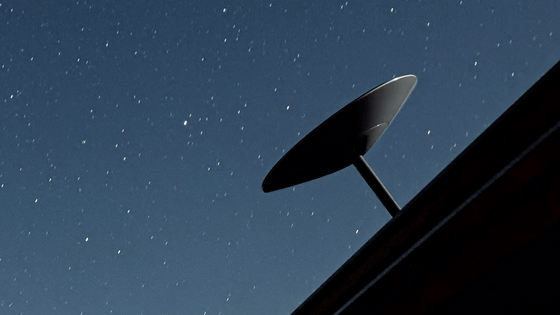It is revealed that the proprietary network chip 'Apple N1' that debuted in the iPhone 17 improves Wi-Fi speeds by up to 40% compared to the Broadcom chip in the iPhone 16

The iPhone 17 series, released by Apple in September 2025, is equipped with Apple's first custom network chip, the N1. The N1 supports Wi-Fi 7 and 6GHz Wi-Fi, achieving Wi-Fi communication speeds superior to those of flagship Android devices.
New Silicon, New Speeds: How Apple's N1 compares with Android Flagships for Wi-Fi Performance | Ookla®

Apple's custom Wi-Fi chip gives the iPhone 17 a notable boost, according to speed tests | The Verge
https://www.theverge.com/news/823198/ookla-speedtest-iphone-17-apple-custom-n1-networking-chip
Apple N1 Modem Battles Android Flagships in 5G Benchmark Brawl | HotHardware
https://hothardware.com/news/apple-n1-modem-battles-android-flagships-in-5g-benchmark-brawl
Ookla, the developer of Speedtest.net , which evaluates internet connection performance, compared the download and upload speeds of the iPhone 17 series equipped with the N1, the iPhone 16 series equipped with Broadcom Wi-Fi chips, and major Android flagship models equipped with Wi-Fi chips from Qualcomm, MediaTek, and Broadcom.
The smartphones used for the Wi-Fi speed comparison are as follows:
・iPhone 16 series ( iPhone 16/16 Plus/ 16 Pro /16 Pro Max)
・iPhone 17 series ( iPhone 17 / 17 Pro / 17 Pro Max / Air )
・Galaxy S25 series ( Galaxy S25 / S25 + / S25 Ultra )
・Pixel 10 Pro series ( Pixel 10 Pro / 10 Pro XL )
・Huawei Pura 80 series (Pura 80 Pro/Pura 80 Ultra)
・Xiaomi 15T Pro
・Vivo X200 Pro
・Oppo Find X8 Pro
Below is a graph comparing the median Wi-Fi download speeds of the iPhone 16 series and iPhone 17 series by region. The iPhone 17 series has a significantly faster Wi-Fi download speed than the iPhone 16 series.
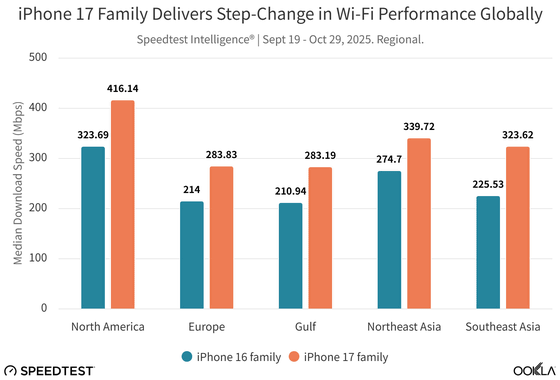
The graph below compares median download speeds in major markets: France, the United States, Japan, the United Kingdom, Italy, Saudi Arabia, Germany, and India. It shows that even in areas with slower average Wi-Fi download speeds, the iPhone 17 outperforms the iPhone 16. Japan's median download speed was the third fastest among major markets, at 328.62 Mbps for the iPhone 17 series and 241.12 Mbps for the iPhone 16 series.
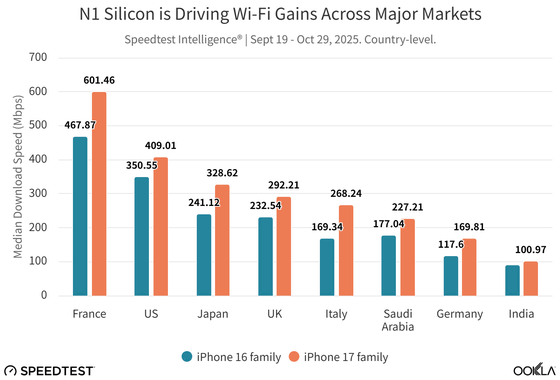
Below is a graph comparing the median Wi-Fi upload speeds of the iPhone 16 series and iPhone 17 series by region. Here too, the iPhone 17 series is clearly faster than the iPhone 16 series.
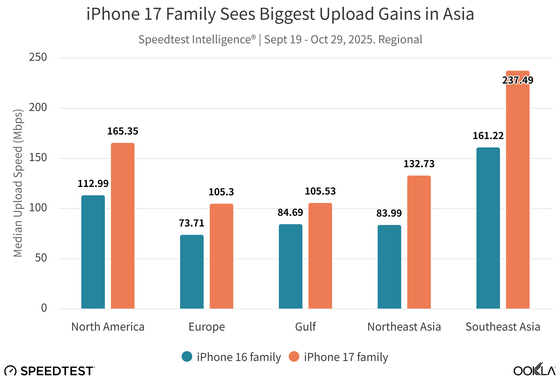
The N1 saw a larger download speed improvement in the 10th percentile (the slowest 10% of data) than in the 90th percentile (the top 10% of data). Specifically, the iPhone 17's 10th percentile speed improved by over 60%, while the 90th percentile speed improved by just over 20%.
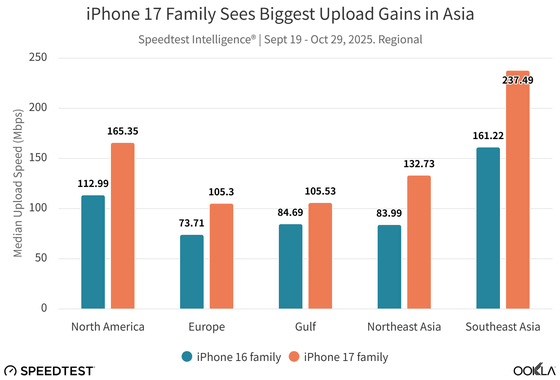
The iPhone 17 series has median download and upload speeds that are up to 40% faster compared to the iPhone 16 series.
The Pixel 10 Pro recorded the highest average download speed during the study period, at 335.33 Mbps, slightly ahead of the iPhone 17 series at 329.56 Mbps. This trend reversed for the 10th percentile of Wi-Fi download speeds, with the iPhone 17 series topping the world at 56.08 Mbps, while the Pixel 10 Pro averaged 53.25 Mbps.
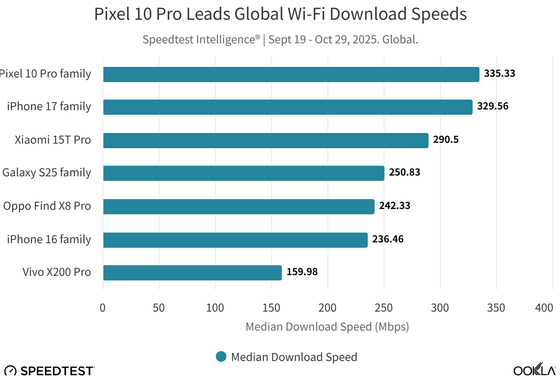
The Xiaomi 15T Pro, equipped with a MediaTek Wi-Fi chip, recorded the world's best download speed of 887.25Mbps in the 90th percentile, as well as the best upload speeds in the 10th percentile, median, and 90th percentile, and the best multi-server latency median (15ms).

The Huawei Pura 80 series, which uses a Huawei Wi-Fi chip, lags behind other flagship models in both download and upload speeds. Ookla points out that the lack of 6GHz support is particularly significant in the 90th percentile of download speeds. However, performance on non-6GHz bands is strong, and with Wi-Fi 6, the Huawei Pura 80 series achieved a 90th percentile upload speed (603.61Mbps) in Southeast Asia, second only to Android flagship models.
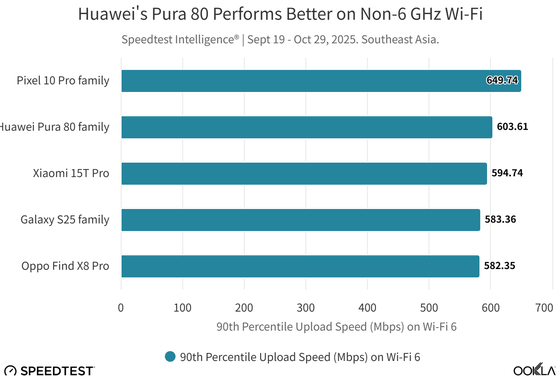
Looking at Android alone, the median download speed on 6GHz Wi-Fi is at least 77% faster than on 5GHz, highlighting the ongoing transition from Wi-Fi 6 to Wi-Fi 7.
Related Posts:
in Hardware, Smartphone, Posted by logu_ii





